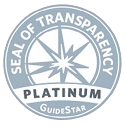Hand in Hand’s Second-Language Curriculum Nearly Complete!

The completion of our 3rd grade Arabic curriculum inspires compassion, respect and equality inside and outside the classroom.
Shared language opens the door to connections, and promoting bilingualism is at the heart of our mission at Hand in Hand. We’re therefore delighted that teachers have begun rolling out our newly-complete, standardized Arabic-as-a-second-language curriculum in grade 3 classes. We’ve already introduced Arabic-as-a-second-language curricula to grades 1, 2 and 4, so this is a major stride towards reaching one of our most crucial organizational goals. This curriculum equips teachers with educational tools built on decades of best practices and aggregated expertise from hundreds of teachers in our network.
Our Arabic-as-a-second-language textbooks and curriculum are designed to accelerate student learning and generate the skills and knowledge needed to make native-Hebrew speaking students feel at home with Arabic. The syllabus was crafted by veteran Hand In Hand educators who have the knowledge, skills and lived experience to teach Arabic effectively and efficiently.
Although every Hand in Hand school varies, students, teachers and parents often default to Hebrew when speaking outside of class as everybody speaks and understands it. This means our Arabic-speaking students sometimes learn Hebrew much faster than our Hebrew-speaking students learn Arabic, making Hebrew the dominant language.
We see our classrooms as a microcosm of society. When Jewish students take the time to learn Arabic, it makes Arabic students feel seen, respected and understood. Just imagine the positive changes we’d see if this were applied to everyday life in Israel.
So we don’t plan to stop at our schools. We’ve shared our curriculum with Israel’s Ministry of Education with the aim of making this essential resource available to public schools all around the country. Now that we’re one step closer to completing the full curriculum, we’re one step closer to making bilingualism the norm.
Learning Arabic doesn’t just allow connection and communication to flourish amongst our students, but shows our Jewish students just how rich the Arabic language and culture is. Similarly, when our Arabic students learn Hebrew they also learn the nuances of Jewish culture, history and identity. This has a long-term ripple effect, positively impacting relationships and cross-cultural understanding for a lifetime.
Since the beginning of the school year, we’ve seen very positive developments in our classrooms. With more Arabic being spoken inside and outside class, the participation levels of our Arab students has increased and they’re visibly more comfortable with their peers and the staff. Communication and relationships have improved amongst all of the children, and there’s been an increase in cross-cultural exposure, with Jewish students celebrating Eid outside the classroom and our Arab students participating in Passover festivities.
One preschool teacher commented: “When the Arabic teacher entered the preschool, very quickly the Arabic speakers became excited to speak and actively participate in their mother tongue. They gained confidence and opened up to Hebrew as well, and the Arabic speakers contributed songs and gained exposure to the Arabic language.”
Bilingualism opens many doors for our students, giving them opportunities and tools for adulthood that positively impact career prospects in the Middle East and beyond. With our third grade syllabus, we’re close to finalizing our bilingual curriculum; and we couldn’t have done it without the support of our community.
To join our incredible supporters worldwide in building a shared society in Israel through bilingual education, donate today.









